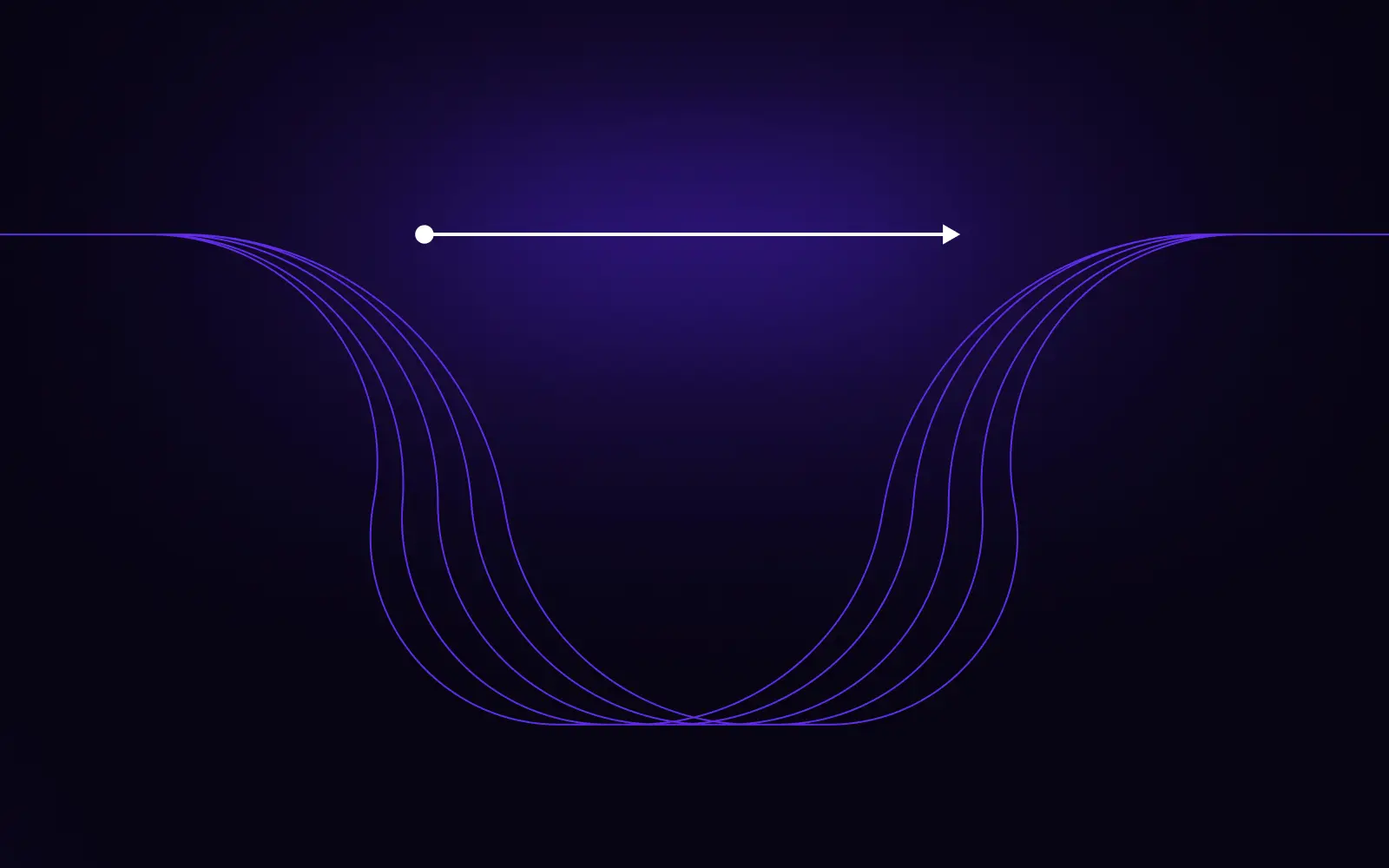
Web 3.0 has been given a number of enigmatic descriptions over the past few years, ranging from ‘the new age of the internet’ and 'the semantic web', through to ‘a decentralized version of the virtual world.’ So what exactly is it and how will it work? And why should business owners be thinking about it now? We take a deep dive into the subject, by reminding ourselves of the history and definitions of Web 1.0 and Web 2.0, and then looking at the three key ideas that underpin Web 3.0.
Web 1.0 was a read-only universe of easy access information
Web 1.0’s heyday was between 1990 and 2005, which was when the world wide web was in its infancy. Its main purpose was the sharing of information, which in itself was of course, a novelty at the time. It was the equivalent of millions of books and documents stored in one place, accessible by users across the world. There were many limitations of course. The websites of the day:
Were static
Most web pages at the time were static, and were hosted on ISP-run web servers. This meant that while the information on these pages was useful, it wasn’t regularly updated. Therefore, users would have little reason to return to the same page more than once. However, we already saw the first intelligent search engines.

Were not interactive
In a world dominated by social media, it’s difficult to imagine a website without some element of interactivity. But the web pages of Web 1.0 offered no such thing. At best, there might be a guest book to sign at the end - but this would apply to the page as a whole, rather than individual comments.
Were proprietary
Many browsers tried to stand out by offering proprietary tags. This led to a number of incompatibility problems between these websites and unsupported browsers. Users were able to download applications, but they couldn’t see how they worked.
Relied on email as a means of communication
During the Web 1.0 period, servers tended not to offer support for server-side scripting. This meant that clicking ‘submit’ on a form led to an email client launching and the form would then have to be emailed to a given address. It was certainly not the user experience that we currently expect.
Web 2.0 wants your personal data
Web 2.0 heralded the dawn of online interaction. Starting in 2005, this ‘era’ has continued through to the present day. Where Web 1.0 was all about static pages, web 2.0 is about user generated content, with other users leaving their comments and posts on existing websites and sharing the information that they read on a range of social media platforms and blogs. The Web 2.0 period is also one in which mobile internet access has boomed, leading to content creation for consumers on the move, and the growing app market.

Creating user accounts and profiles
Web 2.0 welcomed the user accounts and profiles, as these would be more likely to lead to return visits. The idea was that most internet users would rely more on their browser for user interface, apps and file storage - collectively known as ‘network as a platform’ computing. Web 2.0 also led to the advent of online communities, social media, blogging and reactions, such as the famous ‘like’ button. In summary, the name of the game for Web 2.0 was user generated content which was highly shared.
Creating gathering and adverts
With personal data being gathered through user profiles as well as browser cookies, Web 2.0 soon brought ads with it, with valuable space being sold to advertisers in order to feed users more targeted advertising. So far so good. But by the late 2010s, there were some serious concerns about data privacy and these led to an increased focus on the downsides of the ‘folksonomy’ created by Web 2.0.
These downsides include an increase in cyber-bullying, stalking and identity theft. There were also concerns about misinformation or ‘fake news’ being spread among users, both through social media and open-source information sharing portals.

Web 3.0 is the 'people-owned' internet
Web 3.0 is all about creating an internet which benefits every individual user who generates content, rather than just the owners of the platform of where this content is being published. This is because that very same user who produces the content is, or can easily become, a co-owner of this platform.
That very same user who produces the content is, or can easily become, a co-owner of this platform.
Web 3.0 will most likely be based on blockchain technology (more on this below) with no central authority with ownership control. A good example of this is Odysee.
LBRY, a blockchain-based file sharing and payments network runs Odysee, an alternative to YouTube, with a near-identical interface. When a user posts a video, they earn LBRY tokens, rewards for enticing other users to watch their videos. Unlike YouTube, there’s no central moderation though, so Odysee’s creators can’t take down a video that’s been put up, if other users have already downloaded that video to their network and shared it. In this way, the tech works in a similar way to the torrent streaming platforms popular in the early noughties.

Web 3.0 is centered on freedom and equality
The idea with Web 3.0 is that we will reach a point in which each company online is run by a decentralized group called a Decentralized Autonomous Organization (DAO). This is a paradigm shift, as it means there will be no CEOs or senior staff; instead changes will be made through a fully democratic voting process.
This unquestionably leaves more freedom for each individual user, but arguably, it also results in increased risk, due to a total lack of centralized censorship. However, you could argue that DAOs would get together to pass mutually beneficial changes to ensure that certain content isn’t published online.
Web 3.0 protects 'real life' identity
Unlike with Web 2.0, Web 3.0 brings hope of the disconnect between a user’s online presence and their physical self, meaning that you’re much more likely to be able to leave anonymous comments on posts and make payments without buyers knowing your identity. This means that users can make purchases, download content and imagery, all without this being traced to their real person.

The Semantic Web
'The Semantic Web' is often used interchangeably with Web 3.0, although arguably the term itself is more specific. It is essentially seen as an extension of the World Wide Web through standards set by the World Wide Web Consortium. It's ultimate goal is to make internet data readable by machines. So far we've written about the goals of enabling internet users to freely interact with each other by means of Web 3.0, but the Semantic Web presupposes that computers will also be able to interact with it. The term 'semantic' literally means 'relating to or meaning in language or logic.' In the context of the semantic web, data is given meaning through its relationship with other data. Here, artificial intelligence clearly has a big role to play.
Tim Berners-Lee, the inventor of the World Wide Web, said back in 1999:
"I have a dream for the Web [in which computers] become capable of analyzing all the data on the Web – the content, links, and transactions between people and computers. A "Semantic Web", which makes this possible, has yet to emerge, but when it does, the day-to-day mechanisms of trade, bureaucracy and our daily lives will be handled by machines talking to machines."
We're yet to see whether Web 3.0 will be fully semantic.

Why blockchain is at the core of Web 3.0
We already mentioned the important role of blockchain in the future of the internet. But it's worth delving deeper. We recently interviewed founders of one of top Web3 infrastructure projects, Aleph Zero on why blockchain is leading the shift to Web 3.0.
The team has a great explanation: "Data consistency is a critical challenge here. Inconsistencies will lead to unpredictive analysis and logical discrepancies, effectively removing the whole value of web 3.0. The other challenge is the quality of data itself–what if the one entered is misleading on purpose? The solution to that problem lays in blockchain and modern cryptography.
Blockchain stands for data consistency but at the same time, it allows people and businesses to interact in a completely new way, directly and without any intermediaries."
But what does the world think of Web 3.0?
Many journalists and technologists have spoken of Web 3.0 as a potential solution to the domination of the web by the so called 'big tech companies.' There's also a view that it could lead to better online security, and increased privacy - the key issues that currently plague Web 2.0. On the other hand, there are critics who believe that Web 3.0 is nothing more than a part of the 'cryptocurrency' bubble which is likely to burst in the next couple of years. Ultimately it's down to who holds control, and there are undoubtedly both benefits and disadvantages to his control being held centrally.

The transition will be gradual
The move to a decentralized web will not happen overnight and we, as internet users, likely won't notice a sudden leap forward. The first shift towards Web 3.0 is likely to be the fact that in the next few years, you might be able to leave anonymous comments or likes on posts, using a hidden wallet, or you might be able to pay for your Ebay or Amazon shopping using Ethereum. Further down the line, we might see some internet giants which currently maintain central control being disassembled by legislature, while unregulated DAOs begin to take their place. We're clearly going through a period of fast technological innovation, but only time will tell how quickly the move to Web 3.0 will take place.
How can 10Clouds help you with web 3.0?
At 10Clouds, we have a wealth of experience in blockchain technology, with more than 30 individual blockchain products under our belt. We also have a dedicated machine learning team, skilled in a range of solutions that can take your product to the next level. In a nutshell, we’re prepared for the advent of Web 3.0 and we can help get your website or app future-proofed. Want to find out more? Get in touch today.



